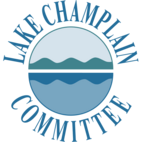Lake Ripples - October 2010
LCC's E-News Bulletin
Fall Questions About the Lake?
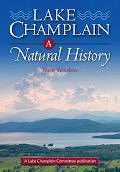
Find the Answers in LCC’s Award-winning Book!
What happens to all the leaves that fall into the Champlain Valley’s rivers during autumn as they make their way to Lake Champlain? Why does a thin line of clouds appear over the lake on crisp October days? Why do you sometimes notice a stale rotten smell around the lake in late autumn?
Find the answers to these and many more questions in <link shop>Lake Champlain: A Natural History. LCC’s award-winning book provides a wonderful introduction to our beautiful almost Great Lake. Get a copy today for yourself or fellow lake lover.
10/10/10 Global Work Party

Find a Local Event Near You
This Sunday, October 10, you can be part of a global work party of grassroots efforts to implement climate solutions. The idea initiated from climate crusader, international environmental activist author, and Champlain Valley resident Bill McKibben through 350.org. From conducting energy audits and planting community gardens to installing CFL light bulbs and lobbying Congress, citizens are getting to work this weekend for a brighter future and asking government leaders to do the same...<link learn news item external-link-new-window>MORE
International Joint Commission Missisquoi Bay
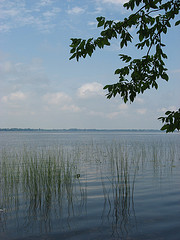
Update Meetings October 12 and 13, 2010 in VT and Quebec.
The International Joint Commission (IJC) will hold two public meetings to discuss progress on identifying important land areas contributing to the pollution of Missisquoi Bay. The meetings will be October 12th in Swanton at the Village Municipal Complex (120 First Street) from 7:00 – 9:30 PM starting at 7PM and October 13th in St. Armand at the Community Center (444 Chemin Bradlee) from 6:00 – 8:30 PM.
The sessions have been scheduled by the International Missisquoi Bay Study Board, established by the U.S.-Canadian International Joint Commission in 2008. LCC has been closely involved in shaping the project as it went out to contract. The IJC has been prohibited from funding on-the-ground implementation projects, but is able to use their resources to better determine where such projects will do the most good...<link learn news item external-link-new-window>MORE
10/20/10 Clean Stream Workshop Redesigning Your Driveway to Improve Stormwater Management
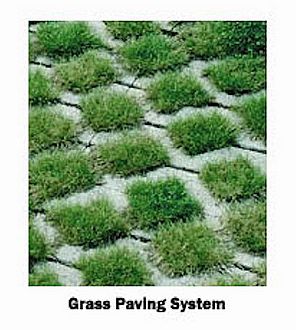
Some of the water quality problems that plague Lake Champlain, begin in our own backyards. Find out what you can do to reduce pollutant loading from your property at a free public workshop focusing on urban and suburban driveways. You’ll learn how to make changes to your driveway that will reduce stormwater runoff and improve water quality. Space is limited so please pre-register in advance. To sign-up or to have your driveway be used as an example in the workshop, please email Amy Sheldon at landslideamy@comcast.net by October 18th and include your address. The workshop will be held at the Village of Essex Junction Municipal Offices, 2 Lincoln Street (Essex Five Corners) on Wednesday October 20th, from 7:00 – 8:30 PM. It’s free and open to all but only Chittenden County residents may submit photographs.
Nature Note – Lake Level
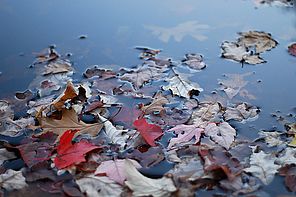
October is usually the month when Lake Champlain reaches its lowest levels. The average lake level for October is 95.03 feet. Water evaporates throughout the heat of the summer. When plants are growing they transpire water through their leaves leaving less to go into rivers and streams. By October, evaporation has slowed as temperatures drop and day length shortens so less and less water leaves via that route. Meanwhile, plants are beginning to die back or drop their leaves for the winter so less water is lost to transpiration and the lake begins to fill-up again. Of course, tropical storms can affect our area as one did on September 30th and October 4th, dropping over five inches of rain in places. Events like this can temporarily offset the overall trend of falling lake levels as we approach Halloween.
Antimicrobials Extreme Clean Isn’t Green
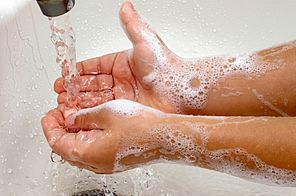
The presence of pharmaceuticals and other “new generation” contaminants in surface waters of the United States has been well documented. In Lake Champlain, for example, researchers have found caffeine, HHCB (a musk fragrance), metolachlor (an herbicide). Effects are not well known and likely to vary as much as the contaminants themselves do. Among the most worrisome groups of new-generation contaminants are antimicrobials. The widespread use of antimicrobial soaps and detergents has led to the spread of “super-germs”, resistant to many of our medications.
Antimicrobials have become ubiquitous. In a study of 2,517 people age six or older, nearly 75% had the antimicrobial chemical triclosan in their urine. Triclosan was found in over 50% of water samples tested by the US Geologic Service throughout the United State while an additional seven antibiotics were found in more than 10% of samples. They wash down our sinks and are not always removed at wastewater treatment facilities..<link learn lake-look antimicrobials external-link-new-window>MORE
LCC Links
- Upcoming Events
- Join/Donate
